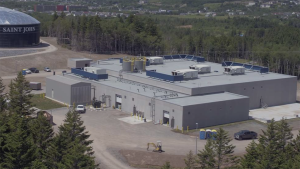While Ontario municipalities have made progress in terms of implementing asset management best practices, leakage in water distribution systems across the province continues to be an issue.
This was a key finding in a new report by the Residential and Civil Construction Alliance of Ontario (RCCAO).
“Asset management has really come a long way in Ontario over the last few years especially since Walkerton,” RCCAO executive director Nadia Todorova told the Daily Commercial News.
“Municipalities have a much better sense of what they have, in what state it is, what’s the lifecycle of it, how much is it going to cost to repair it. However, one of the important asset management indicators is leakage management. That is one area where we still see a problem. Municipalities are still reporting worrying levels of leakage in their water distribution systems.”
Infrastructure in the 21st Century: Smart and Climate-Savvy Asset Management Policies, a study released earlier this month, found millions of cubic metres of treated drinking water are being pumped into the ground every year in the province as a result of leaky and broken pipes.
“It’s incredibly inefficient and defeats water conservation goals when treated drinking water never makes it to the taps because of leaky pipes,” said Todorova.
The study was commissioned by the RCCAO and conducted by Tamer El-Diraby, a professor in the department of civil and mineral engineering at the University of Toronto. It is a follow-up to a similar study he did for the RCCAO in 2009.
“We’ve learned that differing infrastructure investments leads to asset value loss. It also leads to the reduction of service quality and it can also lead to the endangerment of public health or the environment,” said Todorova about the lessons learned over the past few years. “It also leads to higher premiums in the upkeep of assets across Ontario.”
The study looks at reasons for the leakage and analyzes the means available to detect and forecast them.
Ontario municipalities report an estimated leakage rate of between 10 and 15 per cent, which translates to 103 million litres a day. However, reports by consultants who conducted on the ground assessments show that rates in Ontario could be as high as 40 per cent, the study states, adding the volume of losses is equivalent to supplying the daily demand of a system servicing a population of about 250,000 people or filling more than 15,000 Olympic-sized swimming pools every year.
“For example, the Town of Smiths Falls, between 2003 and 2019, leakage in their water distribution system ranged from between 41 per cent to 67 per cent, so quite significant leakage,” said Todorova.
The study recommended the province should continue to provide funding for asset management projects.
“Adequate funding really remains the most chronic problem in Ontario asset management,” she noted.
“Action really is needed here because the study did find that actual leakage rates are expected to increase in the future due to the widening gap between aging infrastructure and investments in the system rehabilitation and the implications of climate change. We have those 100-year storms, which unfortunately are not happening every 100 years, they’re happening much more frequently.”
The study also recommended stable funding should be allocated to support an extended asset-energy-carbon analysis that will define the return-on-investment beyond the financial aspects of asset management projects; and money be provided for municipalities to adopt best practices, lead innovation and develop accountable plans for investment and performance optimization.
The economic and environmental case for sustained investment in water infrastructure was also examined.
“Energy is being wasted when you have leakage in the system,” said Todorova. “If your pipe is leaking what ends up happening is you have to push water at a higher level to make sure that nothing comes into the pipe.
“Increasing the water system efficiency and reducing that water leakage is one very sure way to contribute to GHG emission reduction.”
In terms of the economics, the cost of leakage is always paid by the end user.
“What the study found is that we are all charged 10 to 30 per cent more for water that we do not use,” Todorova noted. “If a fraction of those extra costs are used to potentially rehabilitate the system we can all save on our bills and our property tax.”
Follow the author on Twitter @DCN_Angela.











Recent Comments
comments for this post are closed